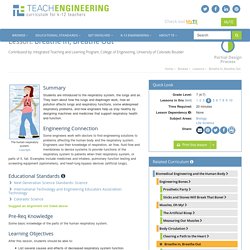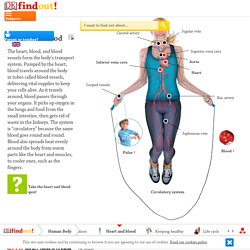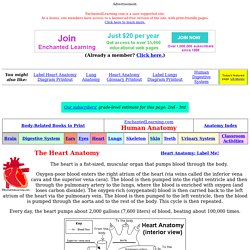

Oxygen’s surprisingly complex journey through your body - Enda Butler. Biology Valentine. Anti-smoking. Exercisecellularrespirationlab. Breathe In, Breathe Out - Lesson - www.teachengineering.org. Summary Students are introduced to the respiratory system, the lungs and air.

They learn about how the lungs and diaphragm work, how air pollution affects lungs and respiratory functions, some widespread respiratory problems, and how engineers help us stay healthy by designing machines and medicines that support respiratory health and function. Engineering Connection Some engineers work with doctors to find engineering solutions to problems affecting the human body and the respiratory system. Engineers use their knowledge of respiration, air flow, fluid flow and membranes to devise systems to provide functions of the respiratory system to patients when their respiratory system, or parts of it, fail.
Educational Standards Each TeachEngineering lesson or activity is correlated to one or more K-12 science, technology, engineering or math (STEM) educational standards. Next Generation Science Standards: Science International Technology and Engineering Educators Association: Technology Assessment. Truth - #FinishIT. 27 Effects of Smoking on the Body. Mood Stimulation Poor Vision Anxiety and Irritability Another Cold, Another Flu Lung Cancer Constricted Blood Vessels High Cholesterol Heart Disease Stained Teeth Smelly Hair Diabetes Complications Erectile Dysfunction Early Menopause Problems with Pregnancy Appetite Suppressant Coughing Bronchitis Too Much Clotting Blood Cancer Yellow Fingers Wrinkly Skin Bad Teeth Infertility Cancer Connection Cervical Cancer Problems for Newborns The Effects of Smoking on the Body Tobacco smoke is enormously harmful to your health.

Cigarettes contain about 600 ingredients. When using a hookah pipe, you’re likely to inhale more smoke than you would from a cigarette. Heart Facts For Kids. There are three main types of vessel in your circulatory system.

Arteries (red) take blood away from the heart, veins (blue) carry it back to the heart, and tiny capillaries (too small to be seen here) link the arteries and veins. Each artery has a name, which changes when it branches into smaller arteries. Similarly, the names of small veins change when they join wider main veins. The jugular vein drains blood from your head and brain. The superior vena cava is the main vein bringing blood from your head, neck, upper chest, and arms, back to your heart. Aorta Aorta About the size of your thumb, the aorta is the biggest blood vessel in your body.
Blood vessels › Circulatory system. Heart Anatomy Glossary Printout. Aorta - the biggest and longest artery (a blood vessel carrying blood away from the heart) in the body.

It carries oxygen-rich blood from the left ventricle of the heart to the body. inferior vena cava - a large vein (a blood vessel carrying blood to the heart) that carries oxygen-poor blood to the right atrium from the lower half of the body. left atrium - the left upper chamber of the heart. It receives oxygen-rich blood from the lungs via the pulmonary vein. left ventricle - the left lower chamber of the heart. Mitral valve - the valve between the left atrium and the left ventricle. Diffusion. The Heart. Lifestyle 1.